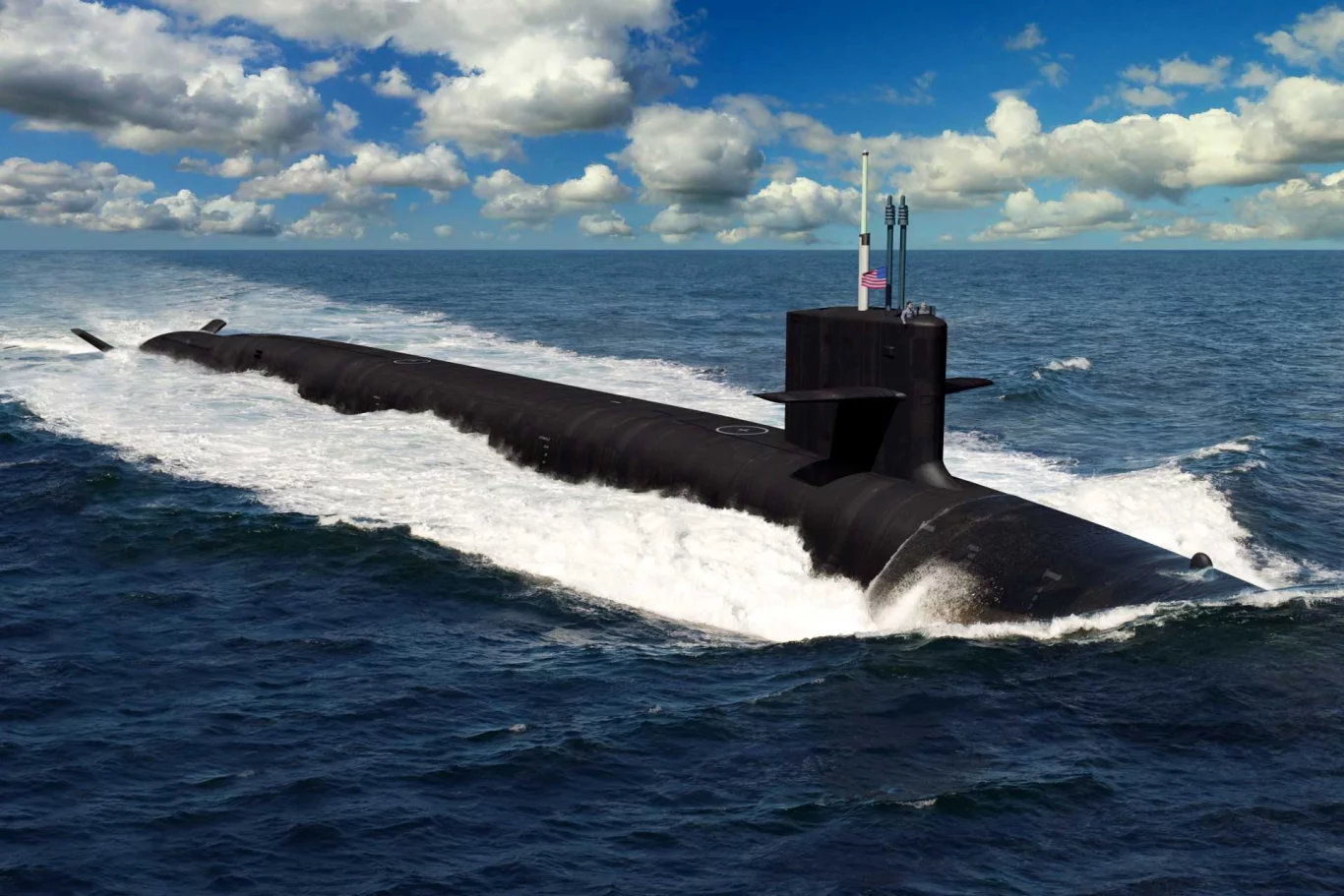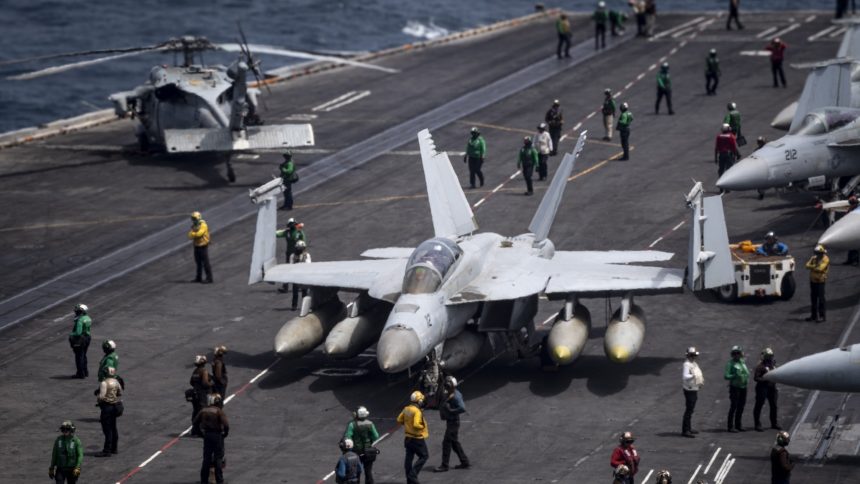In a resounding reaffirmation of its commitment to national security and strategic deterrence, the U.S. Senate has approved critical funding for the construction of up to five new Columbia-class nuclear ballistic missile submarines (SSBNs). As reported by Army Recognition, this monumental decision is more than just a budgetary allocation; it represents a multi-generational investment in the cornerstone of America’s nuclear triad and underscores the nation’s resolve to maintain a credible and robust deterrent capability in an increasingly complex global environment.
The Columbia-class program is arguably the most vital shipbuilding effort currently underway for the U.S. Navy. These next-generation submarines are destined to replace the aging Ohio-class SSBNs, which have served as the backbone of the U.S. sea-based strategic nuclear deterrent for over four decades. The approval of this substantial funding package ensures the continuity of this indispensable national security asset, guaranteeing that the United States will continue to possess an undetectable and survivable second-strike capability well into the latter half of the 21st century.
The Indispensable Role of the SSBNs: The Silent Guardians
To understand the profound significance of the Columbia-class program, one must first grasp the unique and indispensable role of nuclear ballistic missile submarines. They represent the “sea-based leg” of the U.S. nuclear triad, which also includes land-based intercontinental ballistic missiles (ICBMs) and air-launched strategic bombers. Of these three, the SSBNs are considered the most survivable component.
Operating in the vast, deep expanses of the world’s oceans, these submarines are designed to be virtually undetectable, making them an unparalleled platform for delivering a retaliatory nuclear strike. This “second-strike capability” is the ultimate guarantor of deterrence: it means that even if an adversary were to launch a devastating first strike against the U.S., a response would still be assured from the silent depths of the sea. This certainty of retaliation is what fundamentally deters potential aggressors from initiating a nuclear attack.
The Ohio-class submarines have fulfilled this mission admirably since the 1980s. However, like all complex machinery, they have a finite lifespan. As they approach their projected retirement dates, the need for a modern, technologically superior successor became critical. The Columbia-class is that successor, engineered to incorporate decades of advancements in submarine technology, stealth, and operational efficiency.
Engineering Marvels: What Makes the Columbia-Class So Advanced?
The Columbia-class submarines are not merely replacements; they are generational leaps forward in submarine design and capability. Each boat will be a marvel of engineering, incorporating cutting-edge technologies to enhance stealth, operational longevity, and crew comfort.
- Enhanced Stealth: While specific details remain classified, the Columbia-class is being designed with advanced acoustic quieting technologies and improved hydrodynamic features to make it even harder to detect than its predecessors. In the realm of nuclear deterrence, remaining invisible is paramount, and these submarines will represent the pinnacle of stealth.
- Life-of-Ship Reactor: A groundbreaking feature of the Columbia-class is its newly designed nuclear reactor, which is intended to power the submarine for its entire projected 42-year service life without requiring a mid-life refueling. This is a significant operational and cost-saving advantage, allowing the submarines to spend more time on deployment and reducing costly and time-consuming shipyard periods.
- Common Missile Compartment (CMC): The Columbia-class will feature 16 missile tubes, two fewer than the Ohio-class’s 24. However, these tubes will be part of a Common Missile Compartment (CMC) module, a collaborative design effort with the United Kingdom for their Dreadnought-class SSBNs. This standardization offers benefits in terms of development costs, manufacturing efficiency, and future upgrades. Each tube will carry a Trident D5LE (Life Extension) submarine-launched ballistic missile, which itself is undergoing modernization to extend its service life.
- Advanced Electronics and Habitability: Beyond its primary mission, the Columbia-class will integrate advanced electronic systems for navigation, communication, and fire control. Significant attention has also been paid to crew habitability, recognizing that long deployments demand comfortable and functional living spaces to maintain morale and operational effectiveness. Modernized living quarters, recreation areas, and improved noise reduction contribute to a better environment for the sailors who operate these complex machines.
The Economic and Industrial Impact: A National Endeavor
The funding approval for up to five Columbia-class submarines represents a massive economic stimulus and a testament to the capabilities of America’s industrial base. General Dynamics Electric Boat, with its primary construction facilities in Groton, Connecticut, and Quonset Point, Rhode Island, is the lead design and construction yard. Huntington Ingalls Industries’ Newport News Shipbuilding, in Virginia, serves as the primary construction subcontractor.
The program supports tens of thousands of highly skilled jobs across these shipyards and within a vast supply chain of over 4,000 suppliers in all 50 states. These jobs range from nuclear engineers and welders to software developers and logistical specialists. The consistent funding ensures the preservation of critical shipbuilding skills and infrastructure, which are vital for national security and cannot be easily replicated. This consistent investment helps maintain the “cold base” of submarine construction, preventing the loss of expertise that would be catastrophic for future naval shipbuilding programs.
Geopolitical Implications: Maintaining Strategic Stability
From a geopolitical perspective, the U.S. Senate’s decision sends an unequivocal message: the United States is unwavering in its commitment to strategic deterrence. In an era where major powers are modernizing their nuclear arsenals and new players are emerging, maintaining a robust and reliable deterrent is crucial for global stability. The Columbia-class program ensures that the U.S. will continue to possess a credible counterweight to any potential nuclear threats.
Furthermore, the program reaffirms the U.S.’s role as a guarantor of security for its allies. The credibility of the U.S. nuclear umbrella is a cornerstone of many alliance structures, and the modernization of its SSBN fleet reinforces that commitment. As the global strategic environment becomes more unpredictable, the importance of this capability only grows.
The Road Ahead: A Long-Term Commitment
The construction of a Columbia-class submarine is a monumental undertaking, typically taking over a decade from keel laying to commissioning. With the lead ship, USS Columbia (SSBN-826), already under construction and expected to be delivered in the early 2030s, the approval for subsequent boats ensures a continuous production line. The goal is to build a total of 12 Columbia-class submarines to maintain the required number of operational SSBNs for decades to come.
This funding approval is a critical step in this long-term commitment. It demonstrates that despite competing budgetary pressures, both the legislative and executive branches of the U.S. government recognize the paramount importance of strategic deterrence. The Columbia-class submarines will truly be the silent guardians, patrolling the depths and ensuring peace through strength for generations.




